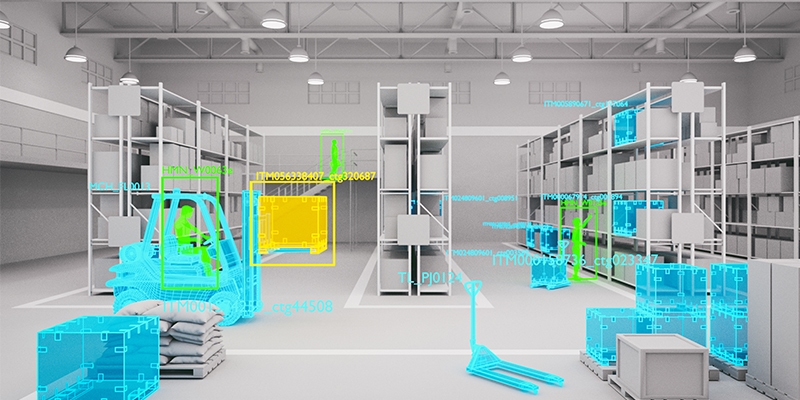Commercial real estate and construction have been notoriously slow to adopt new technologies. But digital transformation is coming to the industry. At CRE Converge 2021 in Miami Beach, experts discussed how several new technologies are affecting developers, builders, and owners:
Reality capture technologies allow you to see and/or record what’s happening at a job site, whether remotely or in-person. This includes robots, drones and various automated cameras, as well as sensors and other data-gathering devices – all connected to the internet.
For instance, HITT Contracting now has a few different types of robots that can be used on job sites. One such robot is a rover the company developed specifically to operate on large horizontal job sites such as industrial and data center projects. It helps reduces the time human team members spend visiting different parts of a project to answer questions or look at something in-person, increasing productivity and improving communication on-site. HITT has also used off-the-shelf robotic options to help their teams perform difficult and dangerous work. Recently, they partnered with Hilti to implement their semi-autonomous Jaibot on a project to drill ceiling anchors, a traditionally physically taxing and time-consuming job, which the robot performed in nearly a quarter of the time with team supervision. Other robots allow superintendents to see what’s happening at one job site while they’re physically at another location, helping to solve problems quickly and efficiently while remote.
HITT is investigating additional types of automation, such as robots that can reality capture a site at night and translate findings into a progress report for superintendents each morning, to automate labor-intensive and manual processes and improve the site operations teams’ experience.
While teams can be offput at the thought of robots, Megan Lantz, vice president, research and development at HITT Contracting explained, “After using robotics on the job site and seeing their value, our site operations teams now specifically request robots for use on their sites. These devices can assist with manual and time-intensive tasks so our teams can focus more on what they love about construction – solving complex challenges and delivering a quality building.”
Data and analytics are a significant pain point for many companies in the real estate industry. “All of these companies now have a lot of data and they don’t know what to do with this data – and it’s not changing anything about the way business is done,” said Bryan Colin, CEO of technology firm View Labs. “They’re spending all this money for all this data and these platforms and they either are not looking at it or don’t know what to do with it.”
Lantz agreed. “We have so many more data points than we did even three years ago, and the amount will continue to multiply,” she said, yet the company is still trying to figure out how turn the data into meaningful insights.
A single dashboard of data remains a goal that eludes too many real estate companies. For instance, a few years ago, HITT found itself with a couple dozen tools to gather data at worksites, but none connected to each other. “We’ve seen single technologies that solve specific problems come online, but there’s still a lack of connectivity between all solutions to truly leverage the data in the best way. We have a team dedicated to our digital transformation looking at that pain point and how to best solve it,” Lantz said.
Still, a single dashboard can facilitate faster transactions and surface new opportunities. Too many large companies rely on a broker to keep track of all their assets and report to them once a month, Colin said. He added that any technology solution has to be implemented and used throughout the company and at every level. “You have to mandate it for everyone,” he said. “You can’t have silos, because then nothing interconnects. … All of the most effective solutions that spread and have real value are company-wide and focused.”
Electric vehicles (EVs) have seen a significant increase in ownership during the past five years, but charging infrastructure is lagging. EV chargers may be required by a municipality in a new development or requested by tenants. Either way, installing them typically requires “conversations with municipalities and walking developers through new code requirements that may or may not be realistic,” said Jose Manuel Correa, PE, a civil engineer at Kimley-Horn. Quite a bit of coordination, time and money goes into their installation, and there is no clear answer yet about the ROI on EV charging stations. “What I can say is that there are a number of heavy hitters right now that are investing millions of dollars into the EV and EV charging market,” Correa said.
EV readiness is top of mind for many property owners, despite the lack of clarity in ROI. It’s less expensive to install the infrastructure for EV charging when a commercial building is built, even if charging stations aren’t in the immediate plans. Correa advises clients to talk with their energy utility as early in the process as possible to determine whether the local grid has charging capacity. Charging station planning can be a five-year or even 10-year process with the utility, allowing the property and the grid to ramp up in tandem.
Tips for Success
- Digital transformation requires careful change management. A few tips for success:
- Talk about what you’re doing and be as transparent as possible about failures and successes.
- Drive home why you’re making these changes.
- Implement any technology solutions company-wide, including at the leadership level.
- Involve employees at all levels in choosing and implementing technology.
- Consider internal innovation competitions in which the company funds winners – but be prepared for some innovations to fail.
This post is brought to you by JLL, the social media and conference blog sponsor of NAIOP’s CRE.Converge 2021. Learn more about JLL at www.us.jll.com or www.jll.ca.









